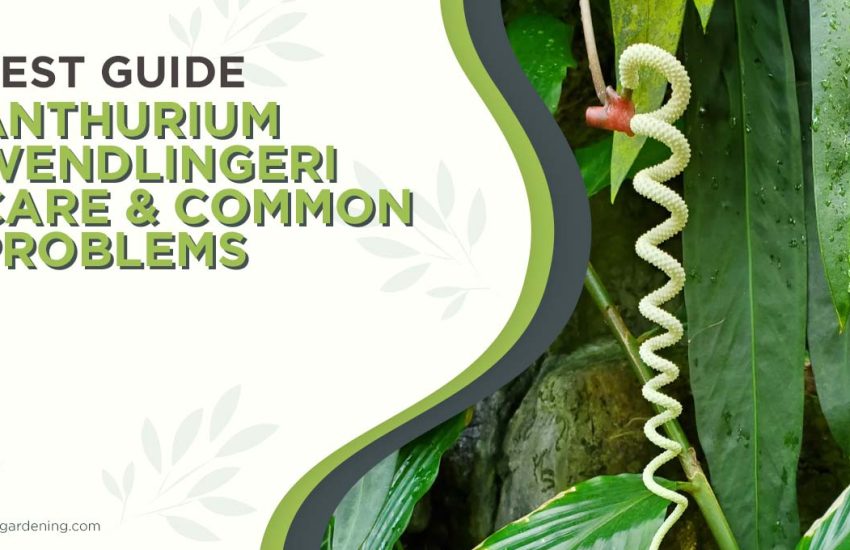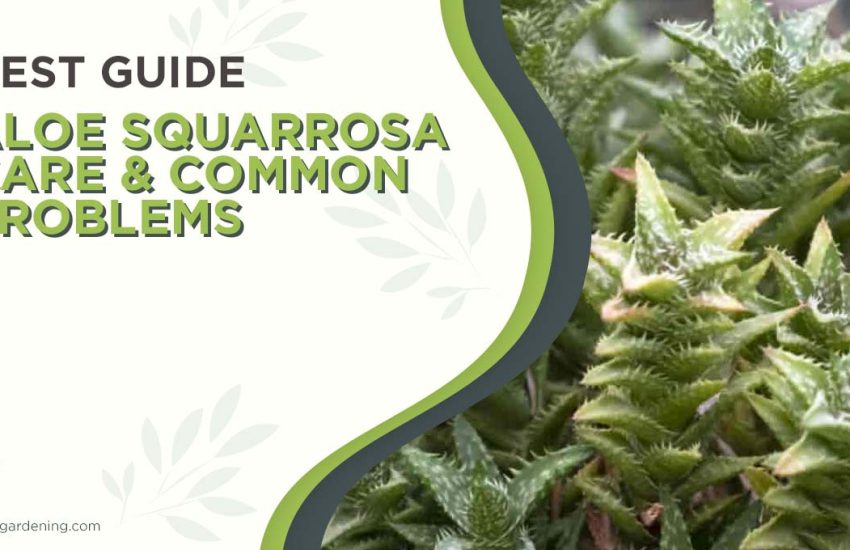Shade Loving Ground Covers New York for Low-Light Gardens and Landscapes
Many gardeners in New York wrestle with greening up those shaded corners where sunlight barely peeks through. Shade-loving ground covers really come in handy here, bringing in easy greenery that doesn’t demand much sun.
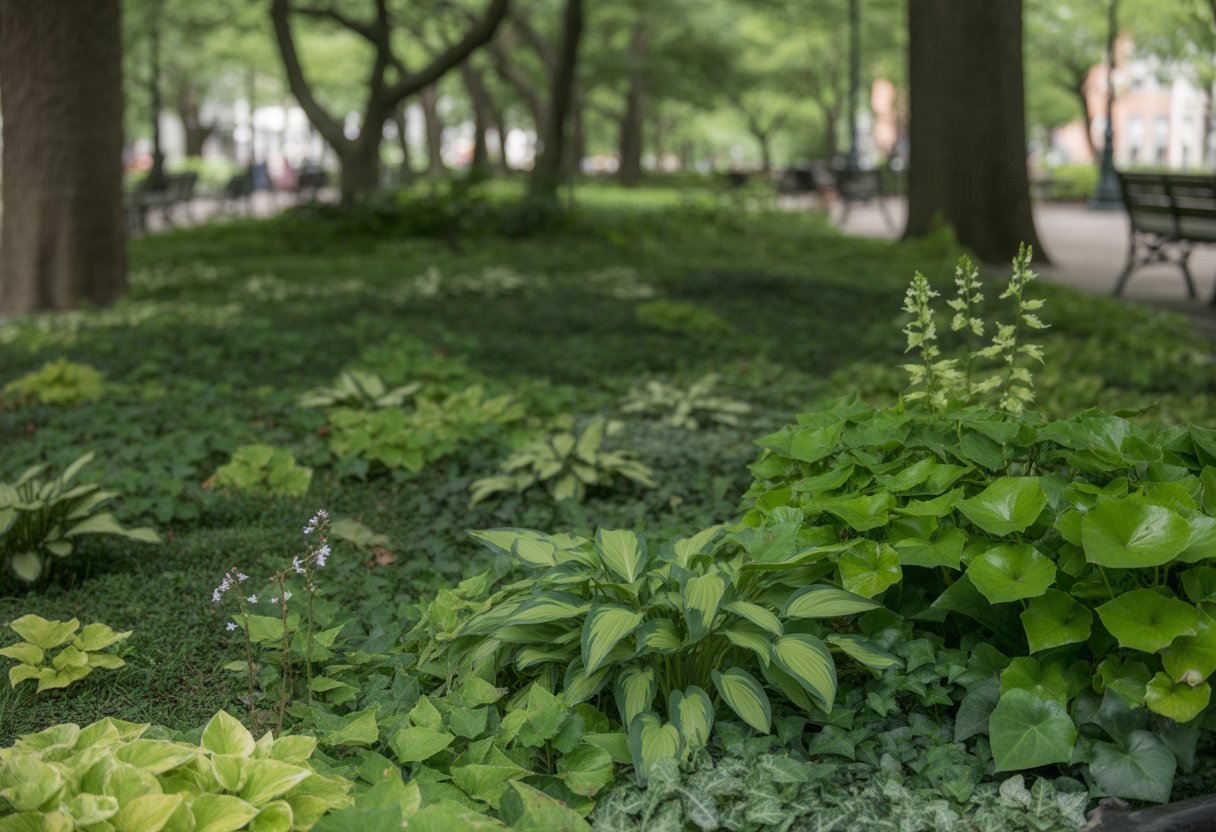
Plants like pachysandra, sweet woodruff, and ajuga thrive in New York’s climate and cover those tricky shady spots. These plants help anchor soil and add some much-needed texture and color to areas that might otherwise look a bit bleak.
Picking the right ground cover depends on things like your soil, how wet the spot stays, and whether you plan to walk there often. Getting a feel for those details can make all the difference for healthy, lasting growth in the shade.
Essential Shade Loving Ground Covers for New York
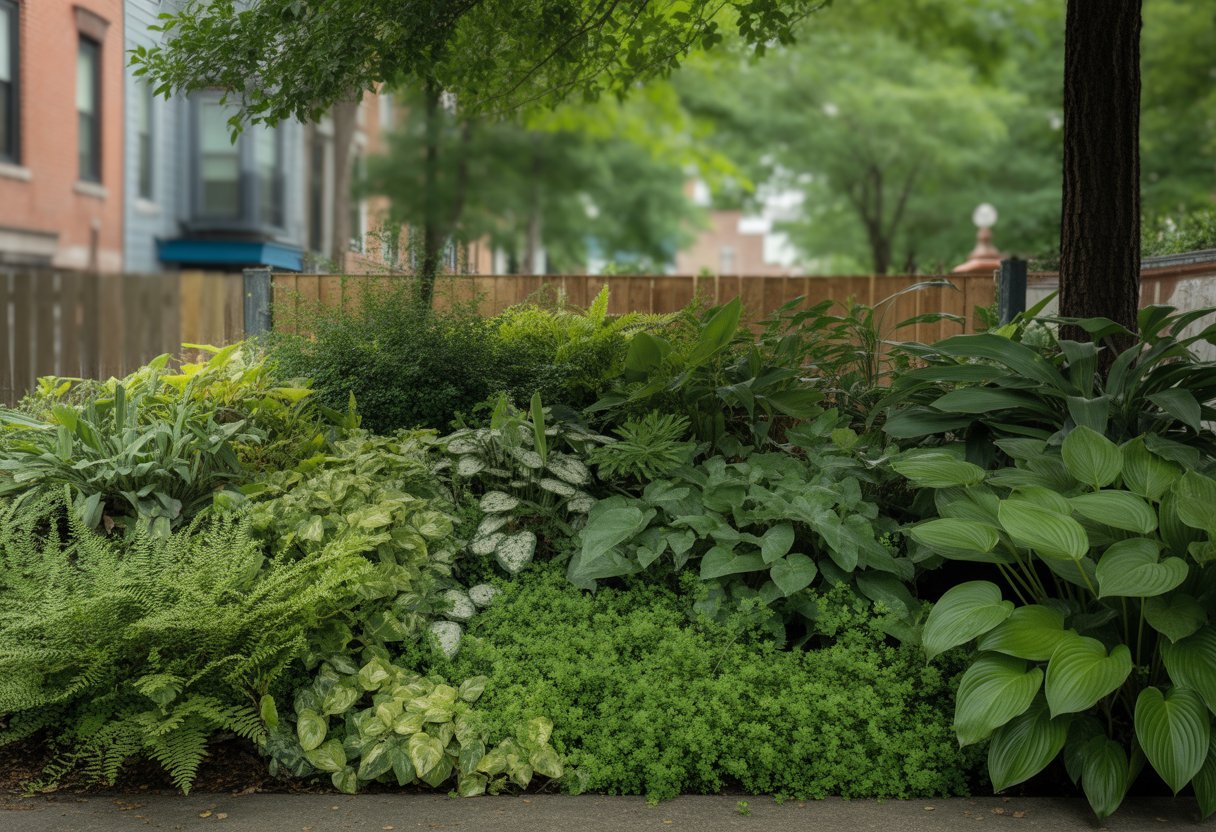
Shade-tolerant ground covers need to handle New York’s weather, keep weeds at bay, and hold soil in place. The choices below offer toughness, style, and a break from endless weeding.
Hostas for New York Gardens
Hostas are a go-to for shade-loving ground covers in New York. Their leaves come in all sorts of shapes, sizes, and colors.
They handle USDA zones 3-8, so most of New York works. Their thick foliage keeps weeds down and locks in soil moisture.
Big-leaf types like ‘Blue Angel’ and ‘Sum and Substance’ steal the show, while smaller ones like ‘Patriot’ fit tight spaces. Hostas want well-drained soil and shade, though a bit of morning sun is usually fine.
You’ll get white or lavender flowers in season, but honestly, it’s the leaves that really matter. Some varieties shrug off deer and slugs better than others, so if pests bug you, look for disease-resistant types.
Epimediums and Barrenwort Selections
Epimediums, or barrenwort, are flexible shade ground covers that fit right in under New York’s trees. They like partial to full shade and don’t fuss much about dry, alkaline soil.
Epimedium x versicolor and Epimedium grandiflorum show off heart-shaped leaves and dainty flowers in white, yellow, or red. They spread slowly, forming a thick mat that keeps weeds out—without taking over.
Deer tend to leave epimediums alone, which is a relief. Once they settle in, you’ll just need to trim old leaves in early spring. Some types even flash coppery or reddish leaves in fall, which is a nice bonus.
Ferns and Their Versatility
Ferns are a classic pick for shady ground covers in New York. They bring all sorts of textures and adapt to different spots.
Christmas fern (Polystichum acrostichoides) and Lady fern (Athyrium filix-femina) do best in acidic to neutral, moist soils. They prefer shade and keep their greenery year-round.
Their fronds layer up nicely, perfect for woodland gardens or softening stone edges. Keep the soil moist but not soggy, and you’ll rarely have pest problems.
Ferns don’t spread quickly, so you won’t spend much time managing them once they take hold.
Sweet Woodruff and Galium odoratum Choices
Sweet woodruff (Galium odoratum) brings fragrance and a thick, low carpet to New York shade gardens. It likes moist, rich soil and full or partial shade.
You’ll spot its whorled leaves and small white flowers in spring. Sweet woodruff spreads through rhizomes, making a solid mat that snuffs out weeds.
It’s deer resistant and puts up with drier shade better than plenty of other ground covers. Folks often plant it under trees or along shady borders, and it pairs well with hostas and ferns for a layered, fragrant look.
Ground Covers for Dry Shade and Challenging Areas
Finding groundcovers for dry shade is a real challenge in New York. You need plants that don’t mind less water or sunlight but still anchor the soil and keep things tidy.
Pachysandra and Japanese Pachysandra Options
Pachysandra terminalis handles dry shade and forms a thick, evergreen mat that blocks weeds. It likes acidic, well-drained soil and doesn’t need much water once it’s happy.
Its shiny leaves look good year-round, though it can struggle in the driest spots. Japanese pachysandra (Pachysandra procumbens) is a native option with similar habits.
This one tolerates dry soil a bit better and puts out fragrant white flowers in spring. Both types resist deer, but they’re slow to fill in, so patience is key.
Ajuga and Ajuga reptans Performance
Ajuga reptans can handle tough, dry shade and doesn’t mind poor, compacted soil. It spreads fast with stolons, making a thick mat.
The foliage comes in dark green or purple, with blue flower spikes in late spring. Ajuga needs some water to get started but holds up during dry spells.
It can take over if you’re not careful, so thin it out now and then. Ajuga also works well for stopping erosion on slopes or rough ground.
Allegheny Spurge and Vancouveria hexandra
Allegheny spurge (Pachysandra procumbens) sometimes gets mixed up with Vancouveria hexandra. Allegheny spurge fits dry, shady spots and has mottled leaves that brighten up the forest floor.
Vancouveria hexandra, or inside-out flower, also handles dry shade and shows off fine-textured leaves and small white blooms. Both like well-drained soil and bring a wild, natural look.
They boost biodiversity and don’t need much care once they’re settled in.
Unique and Ornamental Shade Ground Covers
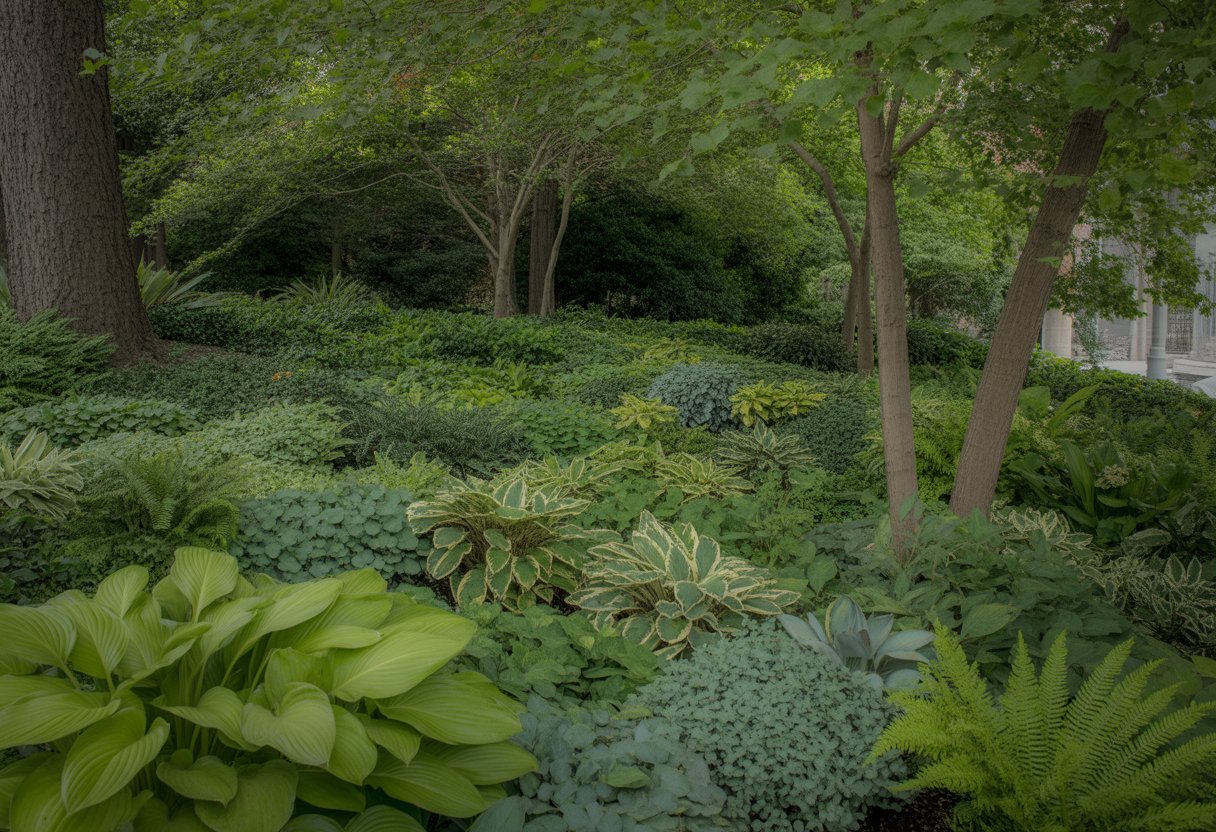
Some shade ground covers really stand out in New York gardens. They’re not just survivors—they add texture, color, and seasonal flair to dim corners.
Lamium and Spotted Deadnettle
Lamium, or spotted deadnettle, brings variegated leaves and dainty flowers that pop up in spring and summer. It grows well under trees and in shady beds, making dense mats that keep weeds at bay.
Lamium likes moist, well-drained soil but will hang in there through drier shade, too. The silver-marked leaves really brighten up shadowy spots.
It’s deer resistant and doesn’t ask for much attention.
Brunnera macrophylla and Pulmonaria
Brunnera macrophylla (Siberian bugloss) features heart-shaped, silver-splashed leaves and tiny blue flowers in spring. It fits right into moist, shady woodland gardens all over New York.
Pulmonaria, or lungwort, shows off speckled leaves and pink-to-blue flowers that pollinators love early in the season. Both plants handle shade and do best in rich, well-drained soil.
They keep things colorful and interesting all season long.
Mondo Grass, Oxalis oregana, and Delosperma
Mondo grass looks like grass but is actually an evergreen ground cover for full or partial shade. It stays low and neat, perfect as an understory plant that doesn’t need much fuss.
Oxalis oregana has sweet, clover-like leaves and pale pink flowers. It loves moist, shady woods and brings gentle color under trees.
Delosperma (ice plant) isn’t the best for deep shade, but certain types can handle light shade. Its bold, succulent flowers work best along the edges where some sun sneaks in.
Lawn Alternatives: Creeping Thyme and Wild Ginger
Creeping thyme can sometimes replace grass in shady areas that get a bit of morning sun. It grows low, takes some foot traffic, and offers fragrant flowers in summer.
Wild ginger is great for deep shade, making shiny, dense mats that crowd out weeds. Once it’s in, it barely needs any care.
Both are solid picks for anyone who wants less lawn work and more visual interest.
Practical Tips for Planting and Maintaining Shade Ground Covers
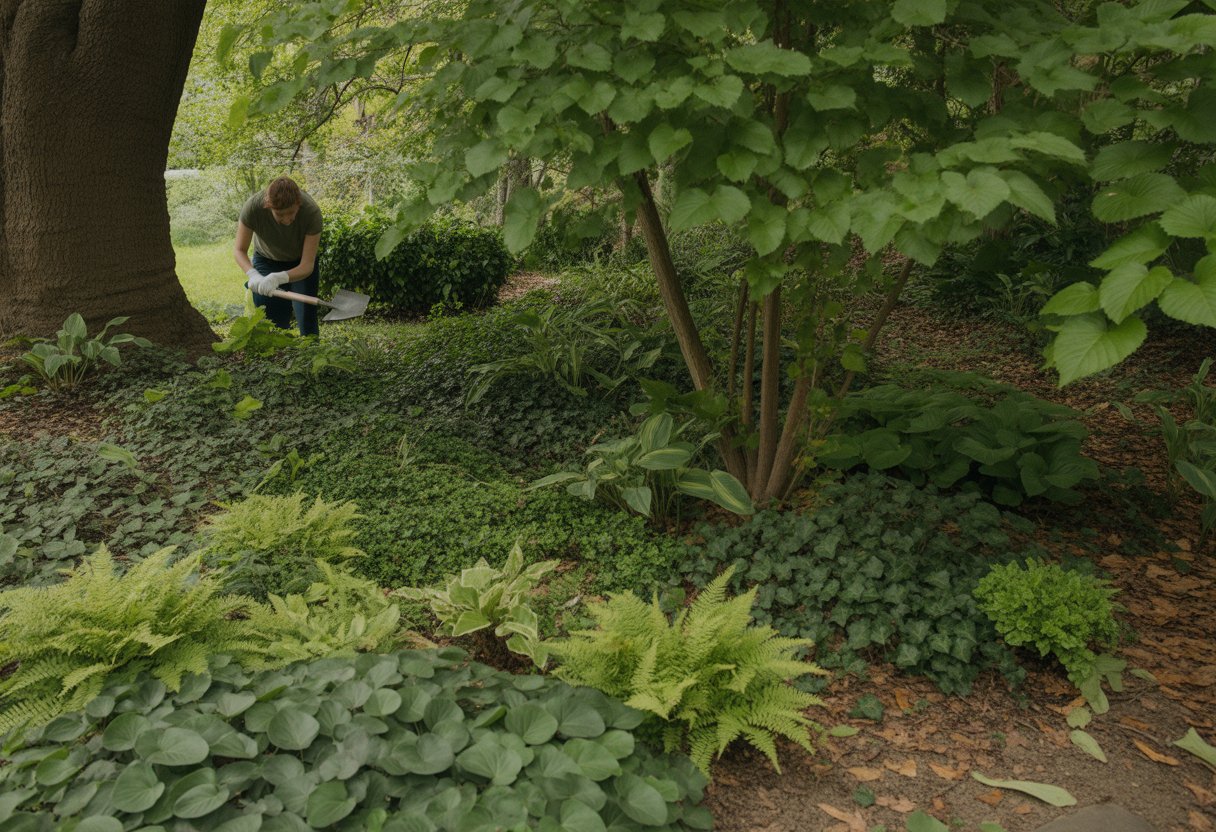
Getting shade ground covers off to a good start in New York means prepping the soil, planting at the right time, and keeping up with seasonal care. A little attention early on pays off when light is scarce.
Soil Preparation and Planting Techniques
Before planting, make sure the soil drains well and has plenty of organic matter. Mixing in compost or leaf mold helps the soil hold moisture, which is important in shady spots that can stay damp.
Loosen the soil down 6 to 8 inches to give roots room to spread. Space your plants based on how big they’ll get—usually 6 to 18 inches apart.
Plant in early spring or fall so roots can settle in while it’s cool and moist. Water deeply after planting, then add a 2-3 inch mulch layer to lock in moisture and keep temperatures steady.
Seasonal Care and Spring Growth
Spring is when shade ground covers really wake up. Trim away dead foliage in late winter so new shoots can push through.
Keep an eye on soil moisture as things warm up. Even if shade slows evaporation, these plants still need about an inch of water a week.
Use a balanced slow-release fertilizer in early spring to jump-start growth. Skip high-nitrogen fertilizers—they can make plants floppy and weak.
Problem Solving and Maintenance Strategies
Fungal diseases and insect infestations often pop up in damp, shady spots. If you spot affected leaves, just pull them off right away.
Try thinning out crowded areas to boost air movement. That can make a bigger difference than you’d think.
You probably won’t see many weeds under thick ground covers, but the stubborn ones still sneak in. Yank them out by hand before they get comfortable.
Keep an eye out for slugs and snails—they love moisture and shade. They show up when you least want them.
Add fresh mulch every year. It helps keep weeds down and gives the soil a little boost.
If your plants start looking thin or patchy, don’t stress. In early spring, replant or divide the clumps to get that lush look back.

